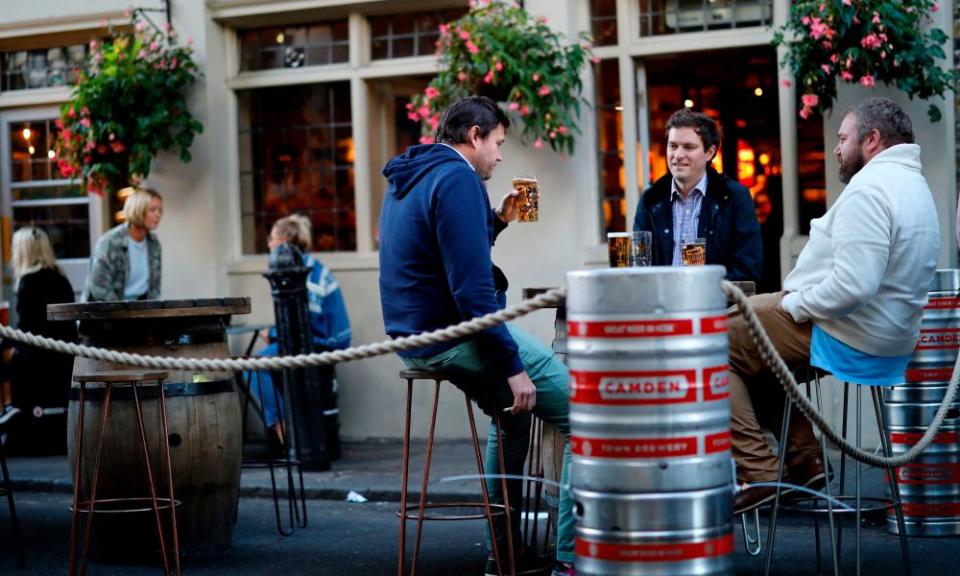So things are getting better – but it’s no thanks to the Bank of England

From the fog of contradictory economic data over recent months comes a sense of direction. Suddenly, there is no more talk of recession, even as business surveys show firms doing OK. Instead, the picture is clear and there is no doubt the economy is growing again.
A slump that was supposed send the economy backwards in the first half of this year has vanished, notwithstanding worries about a global banking meltdown and credit crunch. That leaves predictions of a decline in economic activity being replaced by an expansion during the second, third and fourth quarters of 2023. It’s quite a turnaround.
On Friday, surveys of manufacturing and services companies found a surge in demand for new work in February was exceeded in March, making the latest upturn “the fastest since April 2022”. There was a drag from the 14th consecutive month of falling goods exports – the Brexit effect – but otherwise, businesses reported improving sales and orders.
Bank of England governor Andrew Bailey was until a few weeks ago among the gloomiest of forecasters. Last November he predicted the longest recession since the 1930s. As recently as last month he was holding on to the prospect of a short though painful recession lasting six months. On Friday he swapped his frown for a twisted smile that said yes, the economy was resilient, and much more so than he had previously estimated, but this strength could force him to nudge interest rates higher than he has already. It was a message that said whichever path we take – growth or no growth – we lose.
Companies have kept wages growth low only to find they can impose stellar price rises anyway, a phenomenon dubbed greedflation
It follows that the UK is a stagnation nation – a stuck-in-the-mud, going-nowhere economy spluttering into life after the pandemic and still weighed down by privations from the Ukraine war that most of Europe weathered better than we did.
It means the UK is still in the fog, with contradictory data telling us the situation is improving, but also just as tough as it was when Bank of England forecasters were putting a finger in the air last year.
Bailey explained his stance with a glance at the labour market, where the number of vacancies remains above a million, just as it did throughout 2022. In the five years before the Covid-19 pandemic, the number of vacancies averaged 800,000. A tight labour market must mean that employers are competing for workers and, in this environment, wages are escalating.
The evidence, though, points in the opposite direction. Official figures show private sector wages growth, which covers more than 27 million of the UK’s almost 33-million-strong workforce, stalled at 7% last November and is now going backwards. The central bank’s own regional agents say in their latest report that private sector employers are paying 6% extra, even though inflation has remained stubbornly above 10% since last October.
In addition, some analysts warn that the economy will struggle to get going while interest rates are at 4.25%. They say a recent rise in core inflation – which strips out volatile elements like food and energy – may continue for many more months, handing Bailey another reason to increase borrowing costs.
But core inflation can be blamed to a large extent on multinational corporations jacking up prices to make hay during a crisis. These companies have kept wages growth low, just as the Bank’s agents have reported, only to find they can impose stellar price rises anyway.
Dubbed greedflation, this phenomenon is an indictment of modern capitalism and the way it protects shareholders over consumers, eating into the disposable incomes of millions. Yet for the purposes of setting interest rates, its effects may be in the past.
Even companies that restricted themselves to passing on higher raw materials and energy costs to customers are beginning to cut prices in response to the easing of supply-chain bottlenecks, lower shipping costs and falling oil and gas costs.
Put together falling wages growth, tumbling wholesale prices and declining disposable incomes and there will be few reasons to keep rates at 4.25%, even if the economy does start to grow as now expected.
Related: Tories hope for growth. They never plan for it | Phillip Inman
Workers have tightened their belts, downgraded their shopping habits, spent their savings and if they don’t have any cash stashed away, have borrowed from a credit card provider to keep some semblance of their pre-pandemic standard of living. They are not waiting, poised to energetically consume, just because Bailey says a recession was avoided.
Jeremy Hunt talks of putting rocket boosters on the economy. At best he will get lower inflation, a bit of growth and maybe slightly lower interest rates by the end of the year. It’s called muddling through.

 Yahoo Finance
Yahoo Finance 